It just strikes me as very odd that all representations of the actual physics of NPN transistors in textbooks is perfectly symmetrical, yet neither the diagram used to represent them nor the mathematical model used to simulate them seem to reflect that.
Could someone explain where and how the symmetry disappears when going from the physical model to the mathematical one ? Is that asymmetry not important enough that it's just not worth depicting it ?
Here's an example of what I mean :

(source: ustudy.in)